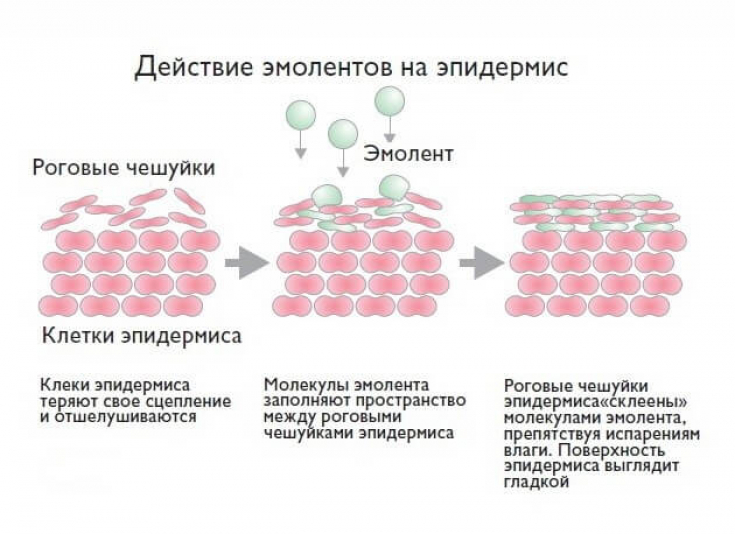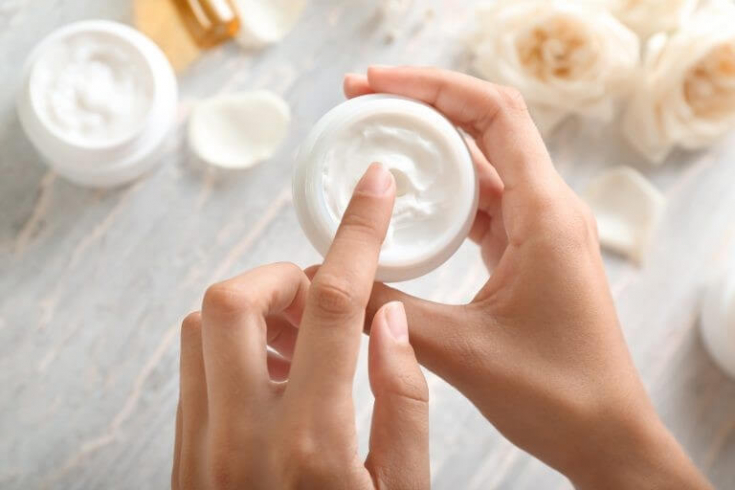For a long time , the search has been ongoing for an effective treatment for skin manifestations of food allergies in children . Research in recent years has provided convincing data on the importance of the skin barrier in the development and course of hypersensitivity reactions.
As a result, assumptions arose about the possible orientation of therapy for manifestations of allergies on the skin, first of all, on changes in the condition of the stratum corneum.
Read more about the rationality of using emollients in the treatment of skin manifestations of food allergies in this article on estet-portal.com.
- Filaggrin gene mutation: defects in skin barrier function in atopic dermatitis
- Involvement of filaggrin in hypersensitivity reactions
- The role of emollients in the treatment of allergic skin pathologies ra
Filaggrin gene mutation: defects in skin barrier function in atopic dermatitis
The epidermal barrier plays an important role in protecting the body from infections and other exogenous factors, reduces the level of transepidermal fluid loss and is involved in immune processes.
Follow us on Instagram!
A mutation in the gene encoding the epidermal structural protein filaggrin (FLG) has recently been considered as a genetic factor that leads to dysfunction of the epidermis and is closely associated with an increased risk of developing atopic dermatitis.
Although filaggrin mutations were not subsequently found in all patients with atopic dermatitis , it has been established that atopic dermatitis is partially initiated by defects in skin barrier function (genetically determined and/or acquired).
Involvement of filaggrin in hypersensitivity reactions
There is evidence that filaggrin degradation products at physiological concentrations inhibit the growth of S. aureus, which prevents the development of complications in hypersensitivity reactions in the skin.
Filaggrin defects are an important risk factor for each step of the atopic march: atopic dermatitis, allergic sensitization, bronchial asthma and rhinitis.
Considering the fact that food allergy is the first step of the atopic march and precedes the development of atopic dermatitis, as well as other chronic allergic diseases, proper organization of its treatment will prevent further sensitization.
Comprehensive skin care for atopic dermatitis in children
Thus, it becomes clear that external therapy using topical moisturizers will prevent or break the vicious circle of inflammation in the skin, which is accompanied by loss of fluid, and restore the barrier layer of the skin.
The role of emollients in the treatment of allergic skin pathologies
Existing domestic protocols for the treatment of atopic dermatitis for external use recommend moisturizing creams - emollients . The generally accepted frequency of use is 1-2 times a day. At the same time, international recommendations emphasize the need to apply emollients on demand at all stages of treatment. Based on the latest ideas about the pathogenesis of atopic march, studies have been conducted on modifying the use of emollients .

The study involved 60 children aged 1 month to 5 years with acute clinical manifestations of food-related skin allergies. The fact of food allergy was recorded from parents' words and according to primary medical documentation. All patients were prescribed an elimination diet .
The children were randomly assigned to 5 groups of 12 people each. Group 1 (comparison group) included 12 children under standard therapy (diet, emollient 1-2 times a day, oral antihistamines of the second generation). Patients of groups 2-5 were also on a diet and received emollient 2, 4, 6 and 8 times a day, respectively.
A non-fluoridated indifferent moisturizer was used as an emollient. The duration of treatment was 10 days.
Triggers of development, diagnosis and treatment methods for contact dermatitis
The effectiveness of therapy was assessed by integral indicators - the level of transepidermal fluid loss (TEFL) and the subjective sensation of itching on days 3, 5 and 10 of treatment compared with baseline data.

The prescribed treatment had the same effect on the presence of itching (the difference between the groups is not significant, p> 0.05) regardless of the prescription of antihistamines. However, the severity of itching decreased with increasing skin moisture levels.
This fact indicates possible mechanisms for the occurrence of this symptom and suggests that itching is not associated with histamine levels, but with dry skin . The study of the content of filaggrin degradation products depending on the type of emollient will allow us to determine the mechanisms of the influence of moisturizing creams on the course of skin inflammation.
What are milia and how to deal with them
Based on the results of the study, the following can be determined:
- an indifferent moisturizing cream allows you to restore the skin barrier in children with manifestations of food allergies on the skin already on the 10th day of treatment;
- It is advisable to prescribe emollients to all children with skin manifestations of allergies 6-8 times per 1 day (about 1 application every 2-3 hours) for a minimum of 3 days, optimally for at least 10 days in a row;
- 6-8 single applications of the emollient made it possible to almost completely (83%) normalize the level of skin moisture;
- The first assessment of their effectiveness is optimally carried out on the 3rd day of treatment.
More interesting information on our YouTube channel :







Add a comment